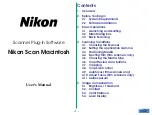
GPR4 Concrete Scanner – User Manual
D-000002-000021
Earth Science Systems, LLC
February 29, 2019
Copyright © 2019 ESS, LLC. All rights reserved.
Page 21 of 28
1. Switch off the scanner unit.
2. Remove the battery from the scanner unit and place it in one of the scanner
battery charging ports in the shipping case. Place the spare scanner battery in the
other charging port.
3. Connect the tablet charging cable to the tablet computer.
4. Plug the main charger power cable into 120/220 VAC mains power.
5. All batteries should charge in 4-5 hours, and all of the charge indicator lights will
be green when all of the charge cycles have completed.
4.8 System Care, and Cleaning
The pavement density system kept clean and free of debris. The sensor unit can be
cleaned with water and a mild detergent.
5 Theory
5.1 Theory of Operation
The concrete scanner uses ground penetrating radar (GPR) to characterize the surface
beneath the sensing unit. The GPR sends a low-energy impulse of electromagnetic (EM)
energy towards the surface. Some of this energy penetrates into the subsurface and some is
reflected back towards the sensor unit. The amount of reflected energy depends on the
contrast in dielectric constant and electrical conductivity of the concrete and embedded objects.
By measuring the travel time of these waves, the depth to the reflectors can be determined in a
manner analogous to a fish finder. By moving the scanner over the surface and detecting object
beneath it, a 2D or 3D cross section of the subsurface can be obtained.
High frequency radar waves (i.e. 2 GHz) provide better spatial resolution than lower
frequency radar waves, but they attenuate quickly as the travel through the subsurface.
Subsequently they cannot detect objects deeper than about two feet. Lower frequency radar
waves (i.e. 750 MHz) are able to penetrate more deeply (to about four feet) but do not provide
as much detail in the subsurface images.








































